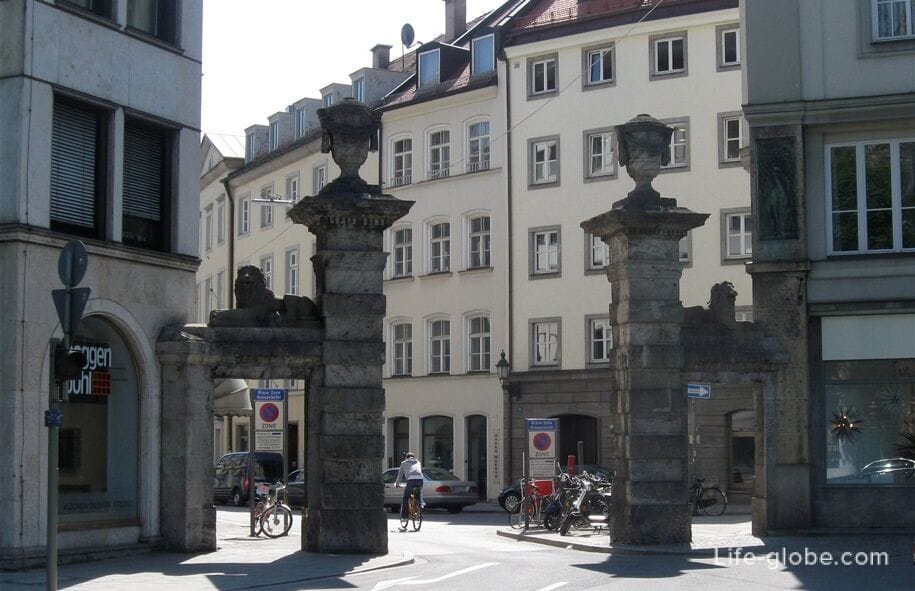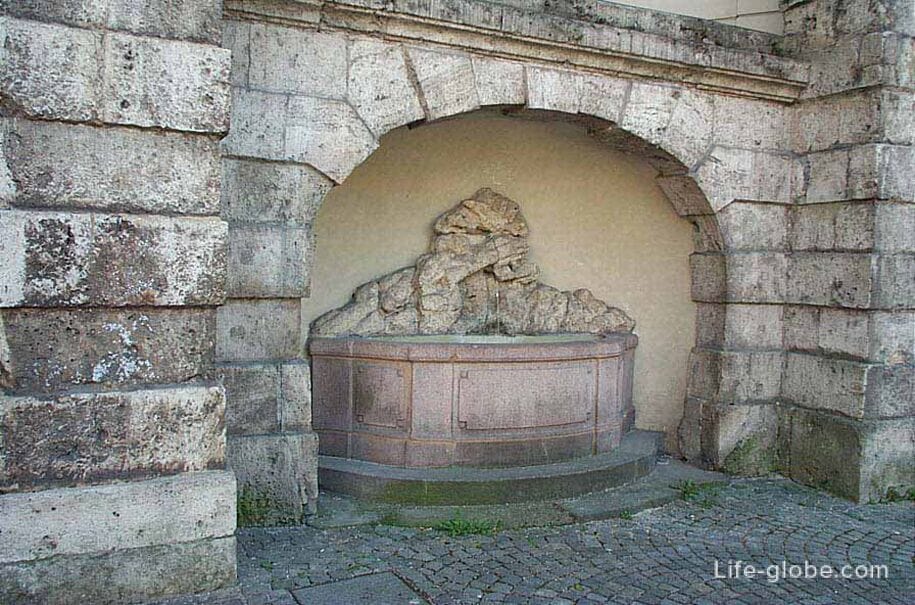
The city gate Makstor and the nearby fountain "Grotto" (Grottenbrunnen) are monuments of architecture and history in Munich, and together they form an architectural ensemble.
Gate and fountain located on the North-Western edge of the historic old town of Munich.
Maxtor is the youngest city gate in Munich.
The gate was built in 1805 by architect Nikolaus von Setelem Greiffenstein after this place was torn down the city wall.
Data gate, unlike the three other surviving city gates in Munich (Sendlinger tor, Isartor and Karlstor), did not have any defensive value, they visually covered the street Prannerstrasse (Prannerstraße) from the open countryside to the West.
The original gate was called "Brennerstr" (Prannerstor). In 1806 was renamed the "gate of max Joseph" (Max-Joseph-Tor / Max-Joseph-tor) - in honor of the king of the time - Maximilian I Joseph. In 1809 the name of the gate was shortened to "Maxtor".
The gates were allowed during the Second world war and reconstructed by architect Erwin Sleichim in 1985.
Currently, Makstor is located at the Western border of Munich's old town, in the place where the end of the street Prannerstrasse is Maximiliansplatz (Maximiliansplatz).
Now Makstor a little like a gate, they represent the two columns located on both sides of the street and surmounted by stone vases. From the columns to the buildings abut two square archway through which pedestrian traffic. On the top bars of the aisles are two stone lions. With these sculptures of lions gate is often called the "Lion gate" or "Gate of the lion" (Löwentor).

On the South side of the gate, in a niche near the corner of the walls of the houses numbered 18 and 19 on Maximiliansplatz, is a historical monument - fountain "Grotto" (Grottenbrunnen / Rottenrunt).
About the creation of the fountain there are two versions:
1. The fountain was created as gate Makstor, architect Nikolaus von Setelem Greiffenstein as a symmetrical layout.
2. The fountain was designed by architect Adolf Ellinger in 1886. However, there are cards of 1847, which shows that the fountain already existed. There is also the possibility that Lallinger was commissioned to create a new design of water fountain and wells in 1886 or use existing ones for repair works.
In any case, the grotto-fountain near Makstor is a monument of architecture and one of the oldest fountains in Munich.
